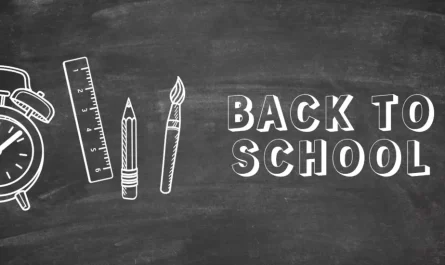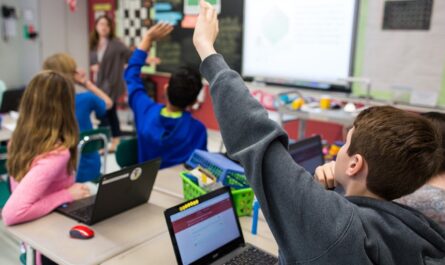Are you wondering why arts education is essential for students? Explore the top seven benefits of incorporating arts into the curriculum and how it can positively impact students.
Seven Reasons Why Arts Education is Important for Students
A comprehensive curriculum in schools must include art instruction as a key element. It includes a wide range of artistic mediums, including theatre, dance, music, painting, and sculpture. Learning through art usually provides students with a strong sense of accomplishment, allowing them to step beyond their comfort zones and view the world from a different perspective. Therefore, compared to someone who has never taken the stage to sing or act for an audience, someone who is accustomed to performing in a theatre is probably more self-assured. Unfortunately, there has been a drop in art education programmes in recent years due to the focus on core courses and standardised testing. On the other hand, incorporating art into the classroom even in higher secondary schools in Thrissur can benefit children in a lot of ways.
why is Art Education Important?
The term “art education” describes the teaching and learning of the arts, encompassing visual arts, music, theatre, dance, and other mediums. It includes investigating, producing, and comprehending art and its social relevance. Imagination and creativity are fostered by art education. It inspires people to think creatively, try out new materials and methods, and investigate novel concepts. Students develop critical thinking skills by learning to approach challenges from many viewpoints through artistic activities. Students gain greatly from arts education since it provides a multitude of advantages that enhance their general growth and well-being. Here are seven main reasons for the importance of arts education:
Enhancing Creativity and Imagination
Students’ imaginations and inventiveness are fostered by art education. Students are inspired to think creatively, experiment with new concepts, and find original methods to express themselves via artistic endeavours. These are transferable skills that are useful in various spheres of life in addition to the arts. Teachers can facilitate creative problem-solving, inventive thinking, and imaginative discovery in students by incorporating art into the classroom. Students who are exposed to art education exhibit critical thinking skills through comparison, interpretation, and observation. Being around the arts inspires people to think creatively and unconventionally. Critical thinking and creative problem-solving are two abilities that work well together to assist students develop innovative thinking skills that will aid them in school and in their profession.
Improve Academic Performance
Students who pursue arts education demonstrate enhanced proficiency in language, reading, and maths, along with an increased capacity for higher-order cognitive abilities like analysis and problem-solving. Along with these academic and professional skills, students also acquire new abilities like courage, resilience, and a positive outlook that will help them succeed in life after high school. Learning the arts enhances learning in a variety of subjects, including science, maths, and literature, in addition to encouraging creativity. Students’ academic performance improves when they apply the skills they acquire in art education to other subjects.
Hand-Eye Coordination
Children frequently need to employ their fine motor abilities to finish art projects. Using scissors, using a tiny paintbrush, and sculpting clay are a few examples of artistic endeavours requiring fine motor control and hand-eye coordination. The children can practise their abilities without fear of criticism by taking part in open-ended art projects. Their fine motor skills get better the more often they are practised. The enhanced capacity for fine motor control extends to several scenarios necessitating precise motions and hand-eye coordination.
Emotional Expression and Communication
Art is a potent medium for communicating and expressing emotions. Through visual arts, dance, or theatre, among other art forms, students can express their ideas, emotions, and life experiences in an arts education setting. As a result, they are able to acquire useful verbal and nonverbal communication skills, which boosts their self-esteem and their capacity to express themselves in many contexts. By exposing students to various viewpoints and teaching them to recognise and value a range of artistic expressions, arts education fosters empathy in learners.
Decision Making
Children can be encouraged to select their own subjects, colours, and artistic interpretations through art education. This gives kids the freedom to choose for themselves in many facets of life. It will let kids use their imaginations more and provide them lots of opportunities to practise making decisions. Even though they will make mistakes, they will learn from them and move on. This will assist the child in gaining the bravery to make choices without being fearful of failing.
Self Confidence
Students gain confidence in themselves when they are able to grasp a certain subject. Therefore, participating in the artwork imparts a certain life skill. Someone has to have stepped outside of their comfort zone to take the stage in front of a large crowd. Their confidence will soar once they see that they can sing or perform well in front of a large audience.
Fostering Cultural Awareness and Diversity
Art has the ability to convey universal concepts and break down barriers based on culture. The integration of art from many historical eras and cultures into the curriculum can help schools promote cultural appreciation and awareness. Students get the opportunity to investigate the customs, principles, and viewpoints of many societies in art education programmes. By developing tolerance for variety and embracing a range of artistic expressions, this exposure contributes to the development of a more inclusive and compassionate learning environment.
Conclusion
Through art, kids can express themselves uniquely and develop their critical thinking and problem-solving abilities. Beyond just being visually appealing, art education improves students’ communication skills, sparks creativity, and cultivates a deeper respect for diverse points of view. The incorporation of art into the curriculum not only enhances its depth but also develops the skills needed to navigate the complexity of today’s world, making education a dynamic and all-encompassing endeavour. In order to support their students’ holistic development, schools must acknowledge the importance of the arts in education and foster a culture that values and supports the arts.




